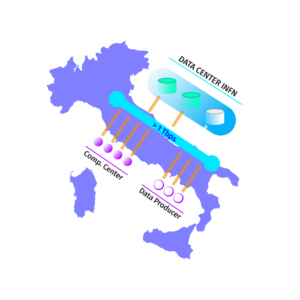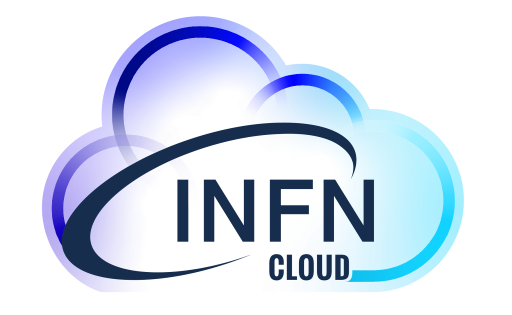Architectural foundations
- Open source, vendor neutral architecture, leveraging many years of INFN leadership, investments and know-how in e-infrastructures and distributed computing projects such as WLCG, INDIGO-DataCloud, eXtreme-DataCloud, DEEP Hybrid-DataCloud, ESCAPE and others.
- Federation of existing Cloud infrastructures, either public or private, for both compute and data leveraging OpenStack, the industry standard platform for distributed computing.
- Consistent authentication and authorization technologies and policies at all Cloud levels (IaaS, PaaS, SaaS) via OAuth and OpenID-Connect, supporting also legacy AAI solutions, via INDIGO-IAM.
- Dynamic orchestration of resources via the INDIGO PaaS Orchestrator across all participating Cloud infrastructures, according to agreed SLAs and Rules of Participation.
The INFN Cloud architecture

Currently the INFN Cloud physical architecture consist of:
- A backbone spanning the two main INFN computing sites (CNAF and Bari).
- In each of these two sites there is a dedicated infrastructure connected at high speed with the other site.
- The backbone is used to host the INFN Cloud core services, such as the PaaS core, the internal DNS, the logging and monitoring services, as well as user services that leverage backbone features, such as automated replication of object storage data across the two sites.
- A set of federated cloud infrastructures, distributed across Italy and connected to the backbone. Such infrastructures are already hosted in numerous INFN sites (Bari, CNAF, Catania, Napoli, Padova) with more to come.
